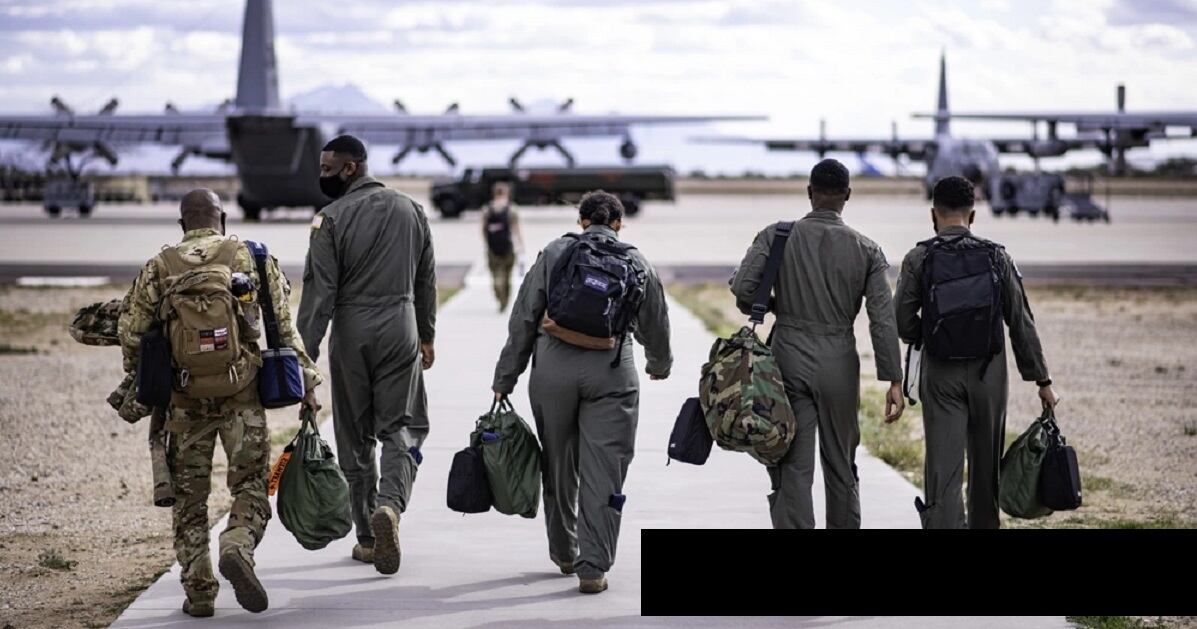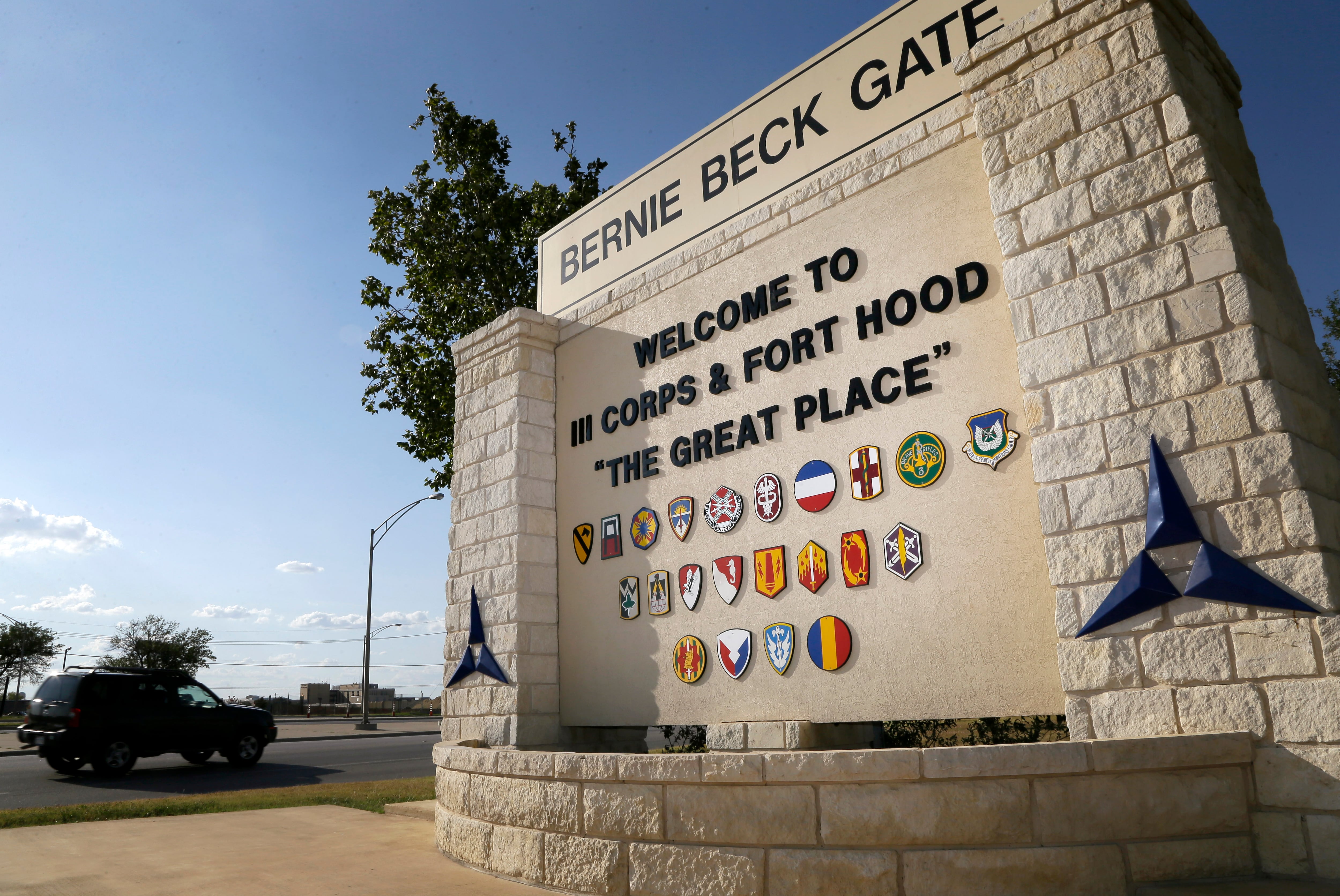This story is part of the portfolio that won the 2023 Society for Professional Journalists Dateline Award for beat reporting in a newsletter or trade publication.
From 2001 to 2021, the shadowy 41st Electronic Combat Squadron — known as the 41st Expeditionary Electronic Combat Squadron when deployed overseas — was the longest continuously deployed Air Force unit in Afghanistan. The EC-130H Compass Call electronic-attack unit from Davis-Monthan Air Force Base, Arizona, was pivotal in fighting the Taliban, al Qaida and Islamic State-Khorasan fighters and protecting American and allied troops, logging nearly 14,800 sorties over 90,000 flying hours. They returned home in October to begin their next chapter with new missions and, soon, new planes.
Air Force Times spoke to six current and former members of the 41st about the past, present and future for Compass Call and its airmen. Interviews were edited for length and clarity.
RELATED
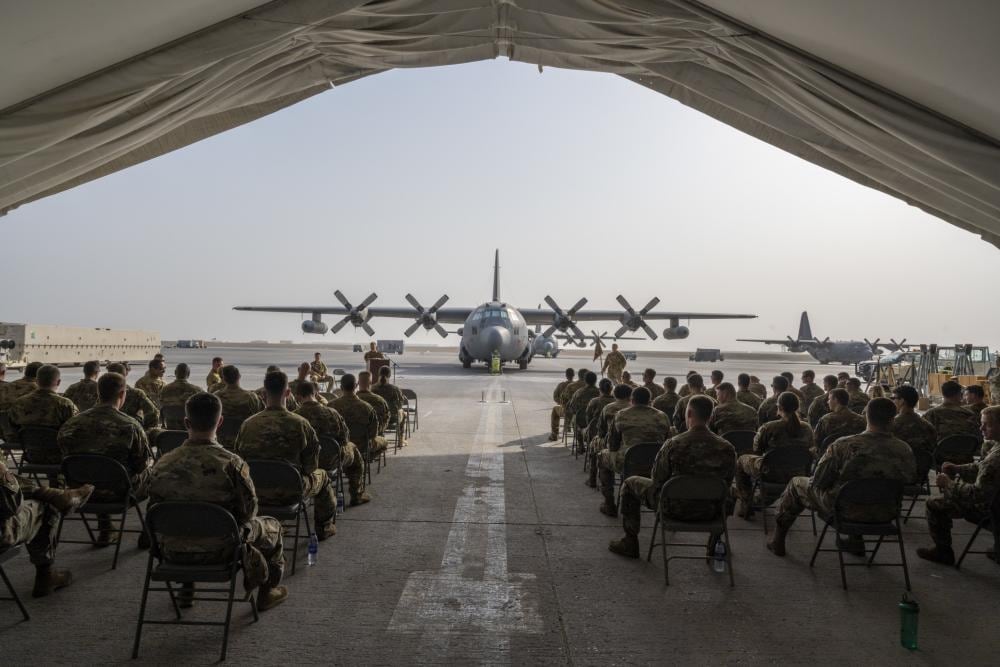
Retired Col. Jon Shumate, former 55th Wing vice commander: My first assignment out of pilot training was to the 41st Electronic Combat Squadron. I got to Davis-Monthan in fall 1999.
Operation Allied Force (NATO’s air war in Serbia in 1999) was the last big show for Compass Call. Everybody at Davis-Monthan before me were the great heroes talking about combat missions out of Italy. We thought, “We missed our shot, and there won’t be another conflict because nobody will want to mess with us.” I figured I’d serve my minimum commitment and leave the Air Force.
Lt. Col. Dave Owen, 41st Electronic Combat Squadron commander: I enlisted in 1996 and commissioned after about eight years and went to pilot training. The mission for the EC-130H drew me to Davis-Monthan, knowing it was something very unique that you would not be able to do anywhere else.
Retired Col. Chris Kirschman, former 55th Electronic Combat Group deputy commander and 41st ECS commander: There are two operational Compass Call squadrons. My first two-and-a-half years, I was in the 43rd ECS. Then I went to Air Force Weapons School, and then to the 41st ECS as a weapons officer.
Rep. Don Bacon, R-Neb., retired brigadier general, former commander of the 55th Wing, 55th ECG and 41st ECS: I started out as an intelligence officer in 1985, applied for flight training and went to navigator school. I chose electronic warfare because I thought it would pair well with intelligence. In 1992, I went to the 41st ECS as a captain, came back in 2000 as a lieutenant colonel and became commander in 2002.
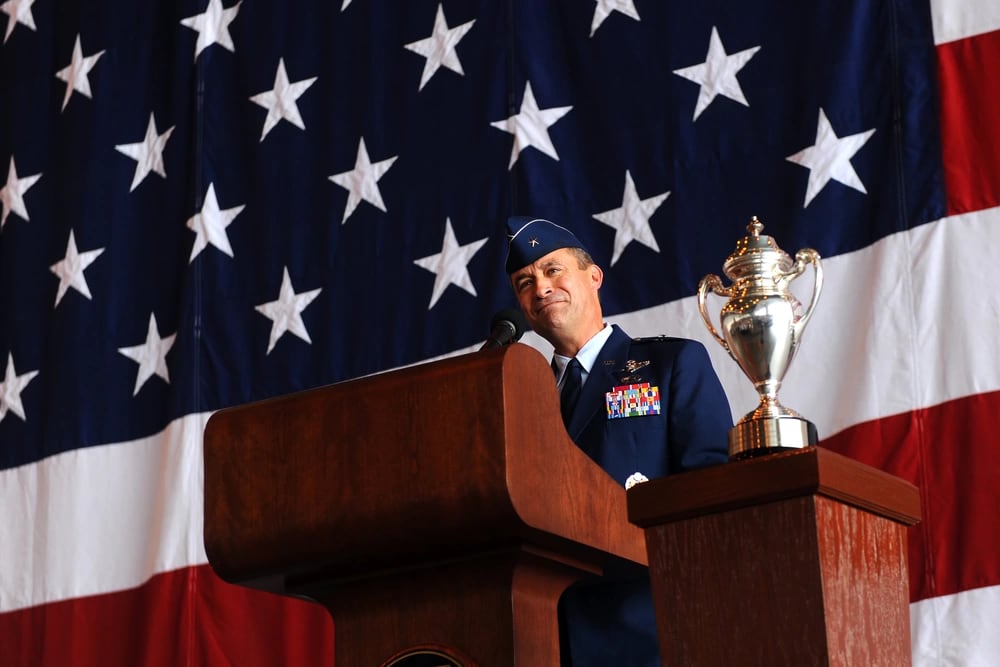
A changed world
Shumate: I drove in to fly a training sortie on Sept. 11, and the radio said an airplane had crashed into the World Trade Center. I thought, this is a guy in a Cessna who did something stupid.
By the end of the day, the base was on total lockdown, and we deployed less than two weeks later. I was a copilot on the initial deployment; I think I was on the first combat sortie.
Kirschman: On Sept. 21, 2001, one other person and I deployed to Fort Bragg, North Carolina, as the initial planners for the Afghanistan invasion. The 41st was getting ready to deploy to Masirah Island, Oman. We were there at the very start of putting special forces into Afghanistan.
The 41st was gone from 2001 to 2021, except for three months in summer 2002 when it came home. It redeployed in the fall to Qatar for Operation Iraqi Freedom; that was the beginning of their continuous deployment.
The (squadron) went from Qatar to Karshi-Khanabad (K2) Air Base, Uzbekistan, and then Bagram Air Base, Afghanistan.
Because Afghanistan is landlocked, we had to fly in much higher-threat areas, where we normally would not put our aircraft. Compass Call had no self-protection. We were never intended to be in harm’s way.
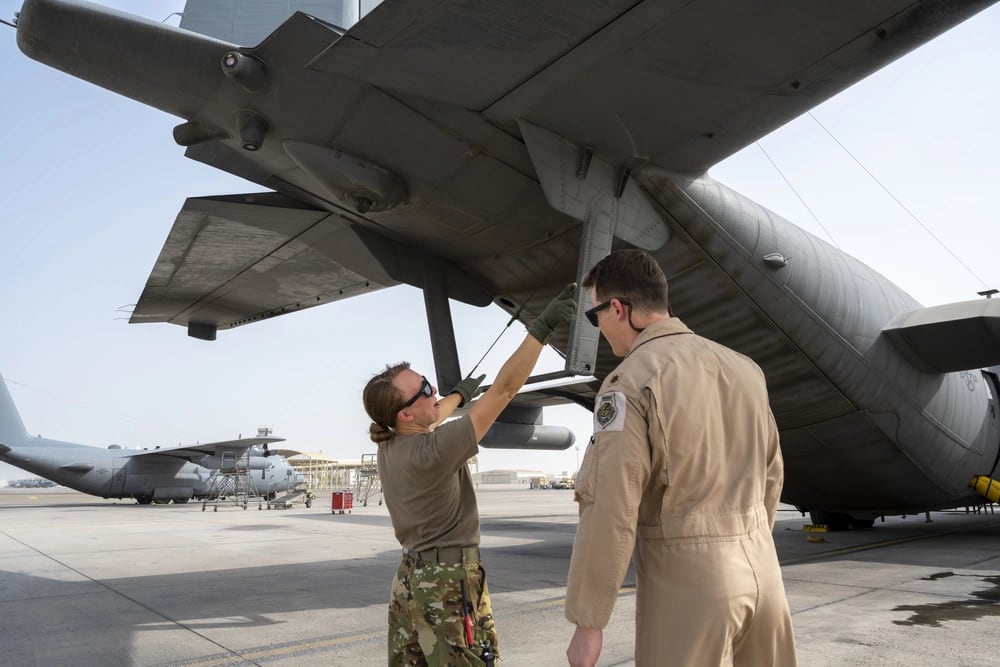
Shumate: We hadn’t done desert war since the Gulf War. I got a desert flight suit, but some guys couldn’t get desert boots.
Our chow hall was a converted warehouse and we lived in tents. I slept my first night on the ground before we got cots. Everything was a work in progress.
We had two overarching objectives: Get Osama bin Laden and eradicate the Taliban. You start when the sun goes down and you’re done when the sun goes up.
Early on, I was fighting to stay awake, and my aircraft commander handed me a can of something new called Red Bull. By the end of that deployment, I had a case of them under my cot and drank three or four a night. As the deployment commander, I had a mini-fridge that was nothing but Rip-Its.
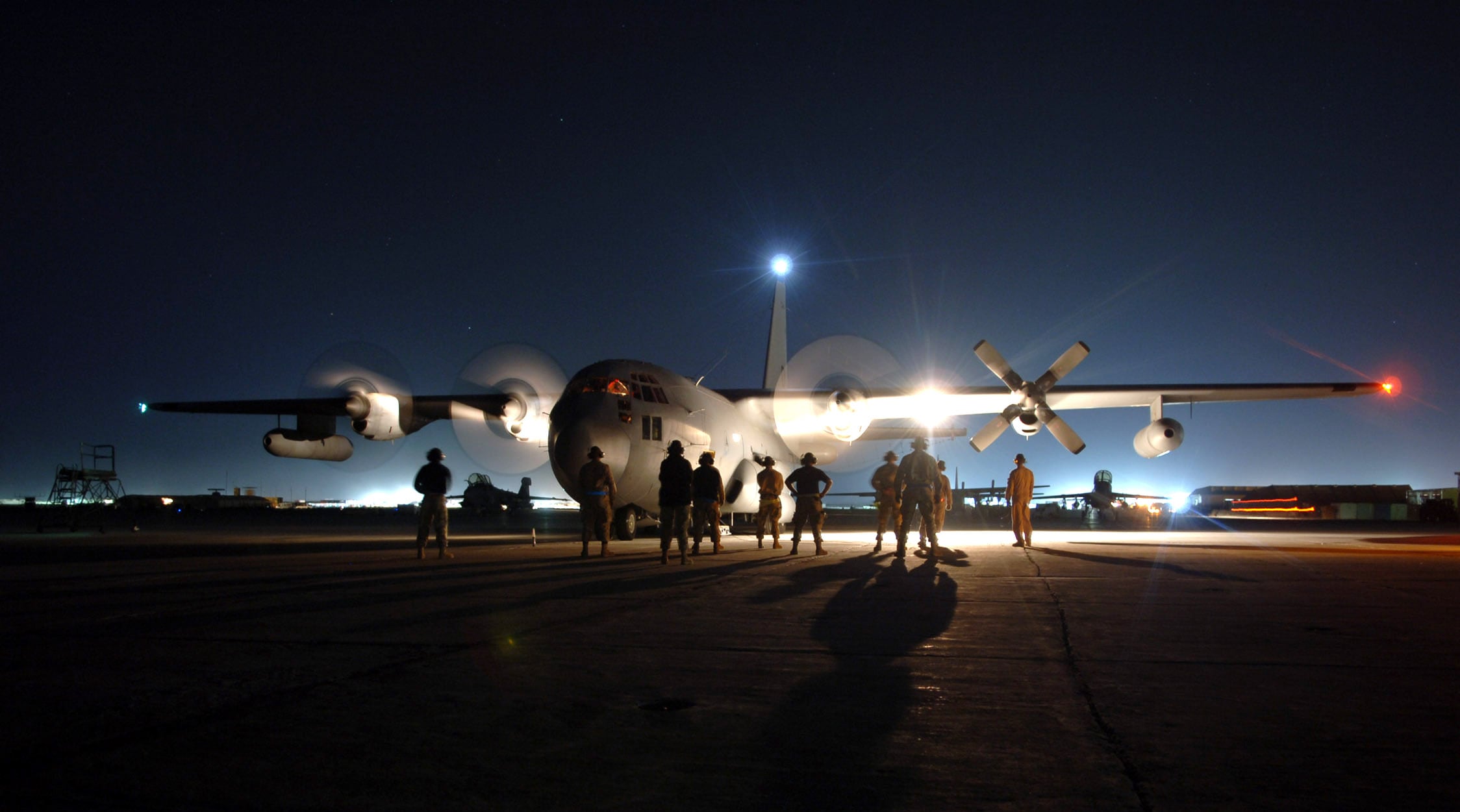
‘Compass Call saved my life’
Kirschman: When you transmit on a radio, Compass Call can see and hear what you’re doing and very accurately locate where you are. Sometimes we tracked signals to help special forces find people that they couldn’t see at night with drones or other aircraft.
The system can jump from one frequency to another and jam many more frequencies simultaneously. When you begin talking on a walkie-talkie, Compass Call jams it. You would say what you’re trying to say, but nobody would respond because nobody heard you. That delays the enemy’s communications so people can get in and out before the adversary reacts.
Our linguists listened to what enemies were trying to do and passed that to the ground forces. We knew where our infiltration and exfiltration points would be, and would hear the adversary talk about going to the exfil. We told ground forces to use an alternate site to avoid getting ambushed. That happened nightly.
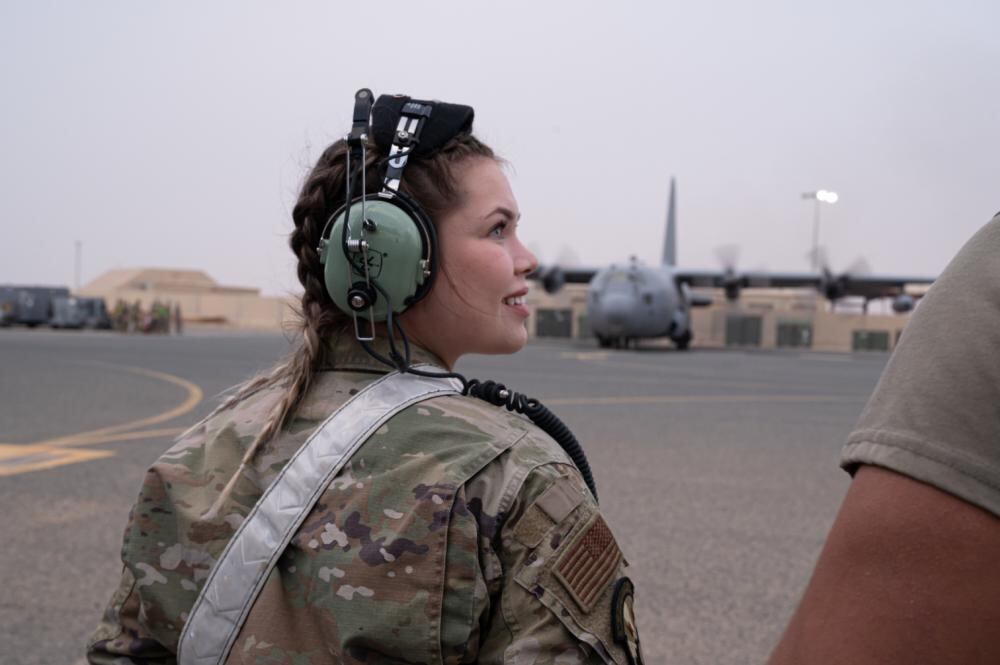
One of our first missions was in November 2001. Eight Western aid workers were kidnapped and held hostage by the Taliban, so in addition to all the other missions that the special forces teams were putting together, we created a rescue mission to get them.
They let me take a day off from planning at Fort Bragg to fly one mission, which happened to be the rescue. We took some anti-aircraft fire while crossing from Pakistan into Afghanistan, which was a little exciting, because we’d never seen that before.
It was just us and the SEALs and the Army helicopters that were going in because it was too dangerous for other aircraft. The SEALs said, “We’re not going to go up there unless Compass Call comes with us.”
Fortunately, the rescue mission went off without a hitch. The aid workers ran away when the Taliban briefly left them, so there ended up not being a fight.
Compass Call was also involved in rescuing Marcus Luttrell (a Navy SEAL who was the lone survivor of a gun battle with the Taliban in 2005), to protect those combat search-and-rescue forces.
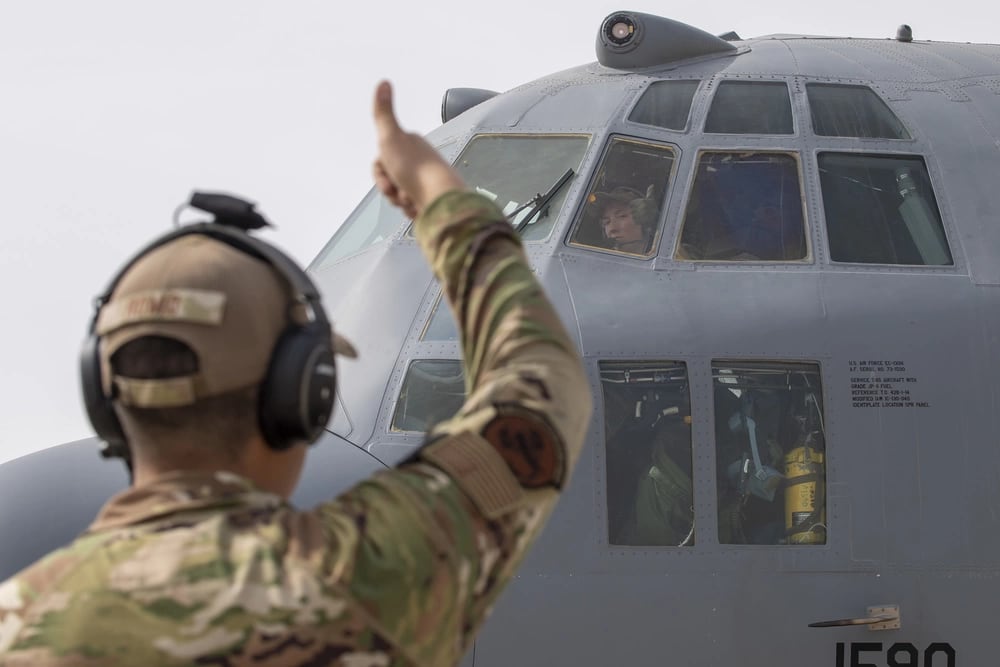
Bacon: When special forces went after a high-value target, Compass Call would fly in the vicinity and take down all the early-warning systems in order to bomb the target. We would disable remote-controlled improvised explosive devices, blocking their ability to turn on or turning them on when we wanted.
One of our units exploded an IED planted in front of Jim Mattis in Iraq in 2003. He said, “Compass Call saved my life.”
(The former defense secretary and retired Marine Corps general was a two-star commander of the 1st Marine Division at the time. Mattis did not respond to a request for comment.)

‘No days off’
Shumate: By January 2002, we dominated the whole country in terms of owning the ground. We told the guys that took over after us, “This is over. We won. The Taliban are defeated. You’ll pack up and go home before you know it.” Boy, was I wrong.
Kirschman: There was a troop surge in Iraq, so they took part of what was in Afghanistan and sent it to fight in Iraq. There were only two crews and one aircraft in Afghanistan.
The 43rd Electronic Combat Squadron was continuously deployed in Iraq from 2002 to about 2015. Between those two squadrons, 40% of Compass Calls were deployed at any given time. There was one aircraft in Afghanistan that flew for 212 days in a row without breaking.
In the midst of Iraq and Afghanistan, Compass Call also deployed to South America and the Horn of Africa. When NATO intervened in Libya in 2011, we sent the remaining crews and aircraft we had at home and stood up a third location in the Mediterranean. There were no days off.
Crews would deploy for 90 days and then go home, because there were limits to how many flying hours you can have in seven days, 30 days and 90 days. We were maxing those out. Our guys were flying 21 or 22 days a month, and the missions were anywhere from seven to 14 hours.
As an older commander, I would leave for three months a year. Younger crews would be gone up to nine months a year. Several folks had 15 or 16 rotations to Afghanistan.
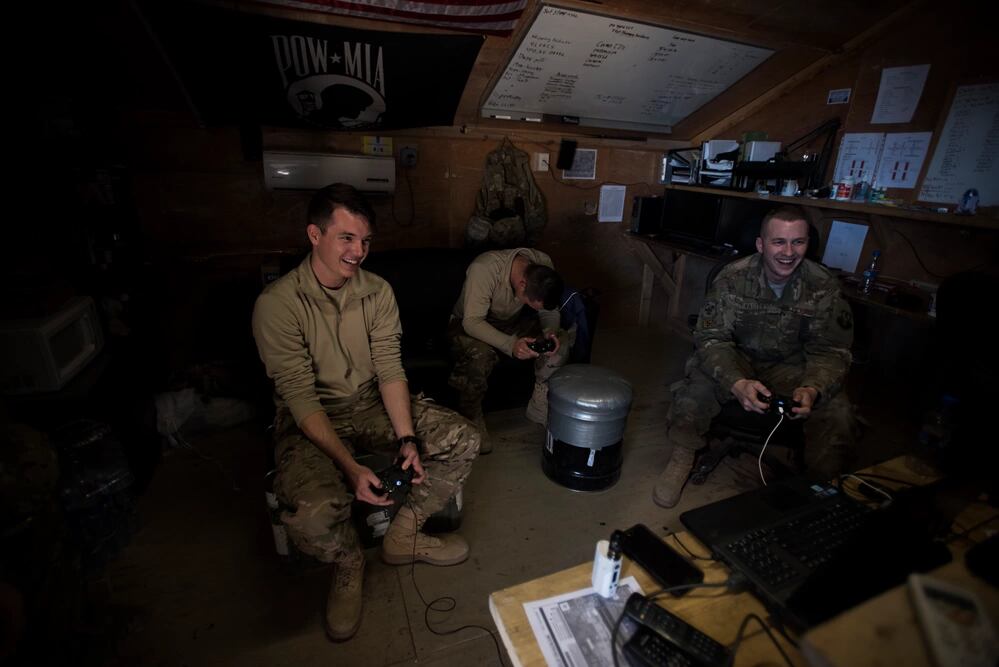
Owen: You would be home for a few months and get ready to go back out again. Within the first week of arriving, you’d know when your next deployment was going to be back to that location. You start wondering if you really want to know. It got to the point where I said, no, let me get through this deployment and you can tell me when I get home.
Kirschman: Most challenging was when people’s home lives fell apart. One airman’s wife had a miscarriage, and he wasn’t with her. We got him home, but seeing what that did to him was very tough. A few folks got breakup letters in the mail.
Capt. Taylor Drolshagen, 41st ECS aircraft commander: I only deployed twice, but it was such a big part of my life. The hours that my crews flew and the number of missions we did was only 0.6% of what the 41st EECS did in 19 years.
Master Sgt. Bryce Lehman, 41st ECS flight engineer: We took over a Marine Corps tent camp while the plywood “B-huts” were built at Bagram in 2003. I was like, “Oh, this is nice, it’s not a tent anymore.” We were there in the winter, so that made all the difference. After a while, you’d leave your stuff there so you didn’t have to mail it each time.
Owen: My first Compass Call deployment was to CENTCOM in 2007. It started to feel like home. I can’t remember how many Christmases were spent away from family, but you’re with your squadron family. I joked that I should get a driver’s license because I spent more time there than in Tucson.
Kirschman: When I deployed in 2008-2010, I slept in the exact same bed on each deployment. The youngest enlisted guy had the same size room that I did as the squadron commander. That was the way we liked it, because we were all in the fight together. We were getting shot at and rocketed almost every night.
Shumate: By the time I got to Bagram as the deployed commander in 2013, they were in dormitories. The squadron area was really nice. We had popcorn machines and big-screen TVs. You’re in a shipping container, but you’ve made it nice.
Bacon: I love the camaraderie. You get to know the pilots, the linguists, the aircraft maintenance technicians, the airborne technician. You build a bond you never forget. I don’t have a tattoo, but if I did, it would be a 41st patch.
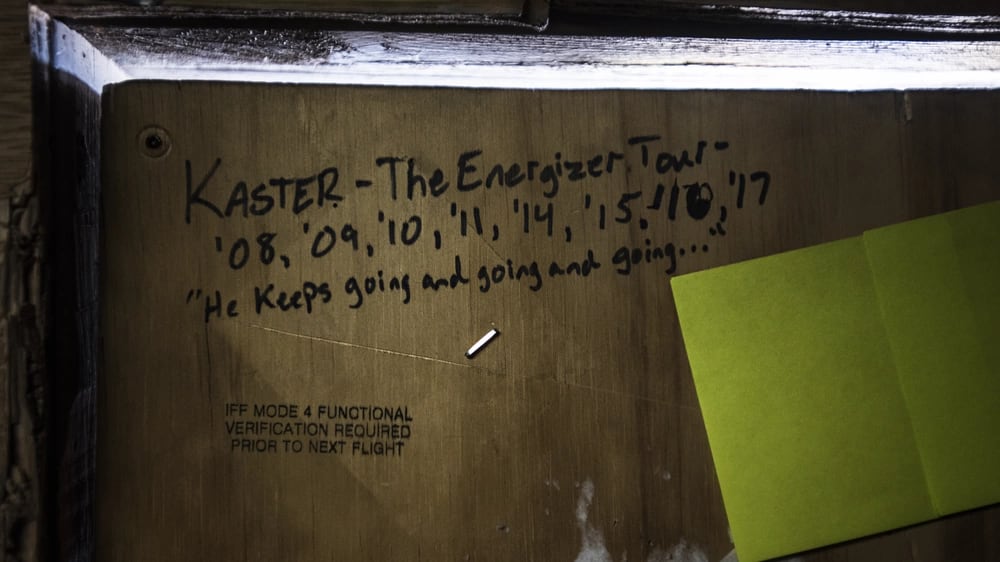
The bin Laden raid
Bacon: A lot of people don’t realize that we were part of the Osama bin Laden raid. RC-135 Rivet Joint and the EC-130H were used to support. We were there in case there was a reaction, and thankfully, we didn’t have to use it. The Rivet Joint was there to listen in and let us know if there was a defensive attack.
Kirschman: We flew two aircraft that night. Their job was to make sure that the Pakistani F-16s did not shoot down the SEALs coming back into Afghanistan.
Ironically, to get to the Compass Call squadrons, you drive by a 1.5-mile section of the aircraft “Boneyard” at Davis-Monthan. One of the sections that I drove by was a neat row of about 12 F-16s that all had the crescent moon on them — all Pakistani F-16s that the U.S. had decided not to ship after Pakistan tested nuclear weapons.
That arms deal went through in 2005, and those F-16s I drove by every day were sold and flown to Pakistan. So, on May 1, 2011, the F-16s we were worried about shooting down our SEALs were those same F-16s that were a half-mile from our squadron.
RELATED
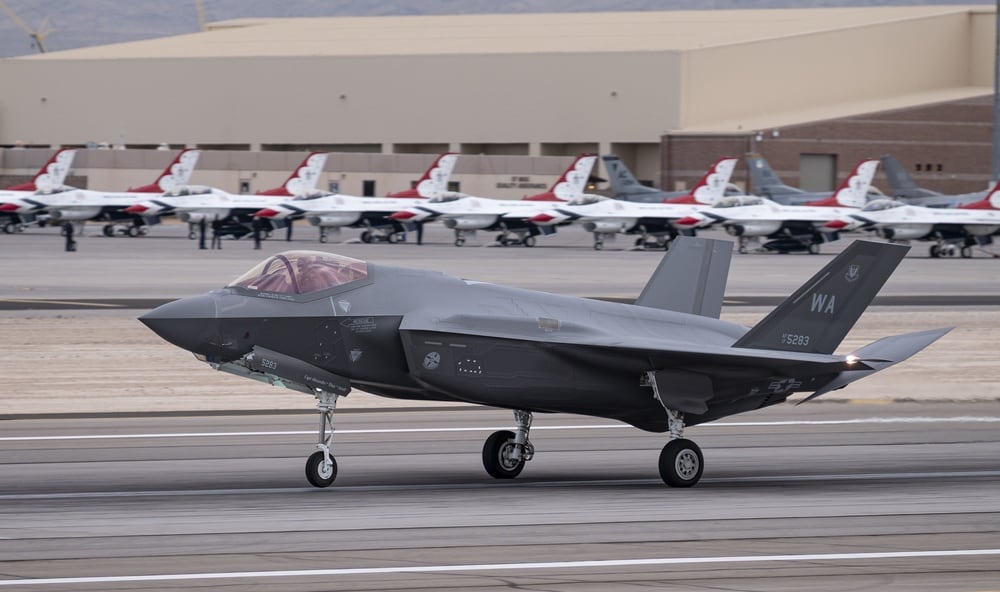
Shumate: The Taliban didn’t want to die. They became a more intelligent and agile enemy.
Kirschman: The British were going after the Taliban near Kandahar and couldn’t find them because they were very good at hiding in trees. They were very well-disciplined and wouldn’t use their walkie-talkies. So, an American gunship fired rounds into an empty field, knowing it wouldn’t hit anything. But the Taliban got on their radios to make sure everybody was OK. As soon as they did, we located each guy, sent their locations to the gunships, and the gunships picked them off.
When I listened to enemy forces on the ground once, it didn’t matter that I didn’t know the language. You could hear them whispering to each other because they knew special forces were in the area. It sends a chill down your spine knowing our guys are less than 100 yards away.
Shumate: Sometimes you feel a tremendous amount of frustration and helplessness.
When you’re circling overhead and one of your troops on the ground gets shot and has a sucking chest wound, you realize there’s a horrible situation that you can’t fix.
RELATED
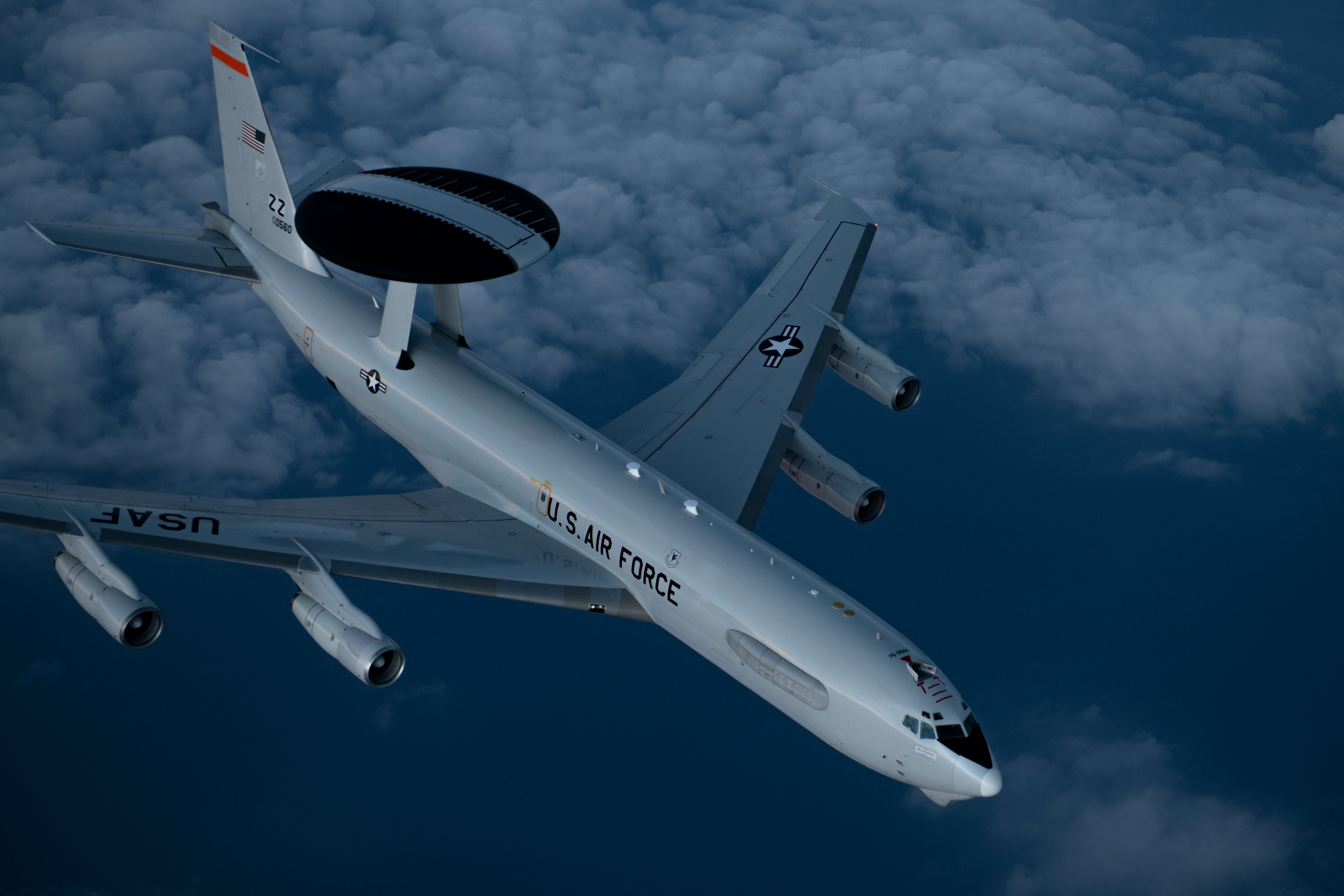
Kirschman: When the Army or Marines lost troops, their remains would come through Bagram. Anytime we sent someone home in a flag-draped coffin, we had a ceremony. It didn’t matter if it was 11 a.m., 3 a.m. or 10 p.m. — everybody would line up and salute the Humvees as they took the remains out to the airfield.
We had almost 70 fallen comrades in the 93 days I was there in 2008. That was rough to see, because you’d see their platoon mates — 19-, 20-year-old kids. It motivated you to do your job well to protect them.
We debriefed with special forces every night, and many times, we made a life-or-death difference in those operations. There was only one mission where we lost two Americans that we were responsible for protecting.
Drolshagen: I was at Bagram’s mission planning center when an American walked in, looking for somebody who flies with Compass Call to thank us for being out there.
We supported his team on the ground a couple nights earlier. He didn’t think all of his guys would have made it out that night without us.
Kirschman: We flew several missions that stopped events that ultimately, if left alone, would have resulted in another attack on the homeland. There were bomb-making capabilities or other cells planning to attack the U.S., and we broke them up.
Drolshagen: No matter how tired we got, there was a job to do and people were counting on us to do it.
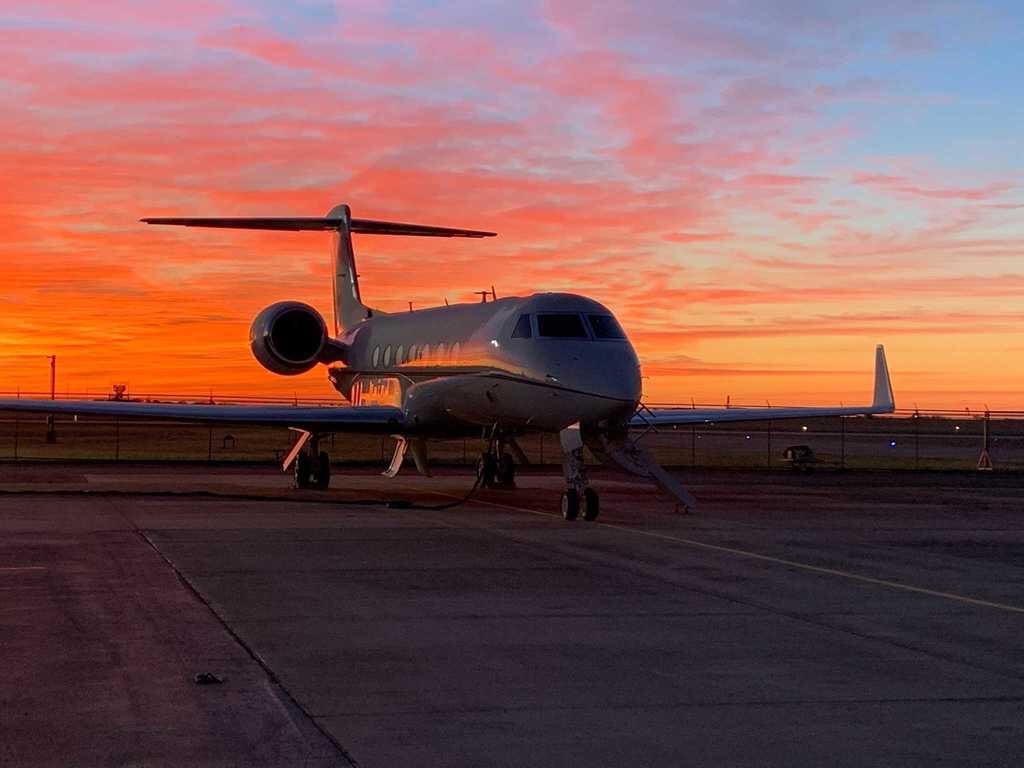
‘Don’t forget us’
Shumate: When I deployed as a young guy, the Twin Towers were still smoking. To say we were revved up to fight the war is an understatement. But when you’re at the 20-year point and things are pretty quiet, it was a leadership challenge for deployed commanders.
You feel like you’re doing the same thing over and over. I signed the paperwork to nominate someone for his 24th Air Medal.
I mean, who has 24 Air Medals? When you see someone with 3,000 combat hours, a lot of it over Afghanistan, you realize we’ve been doing this for a long time.
Drolshagen: My crew was the last EC-130H out of CENTCOM. We wanted to leave our mark, so there’s a Compass Call mural on a T-wall at Bagram. We all signed it. We painted little airplane silhouettes and signed those, too. It was a sense of, “Don’t forget us, this was ours for so long.”
My crew supported the final day of the withdrawal from Kabul. We encountered problems pretty much every step of the way, from conflicting with air traffic control to a hydraulic leak that was one of the worst I’ve seen. We mitigated that and kept supporting the guys on the ground.
We were directly involved in saving lives on the ground and in the C-17s. Many Americans are alive today who wouldn’t be if we weren’t there.
We decommissioned the squadron, closed up shop and flew home on Oct. 1, 2021.
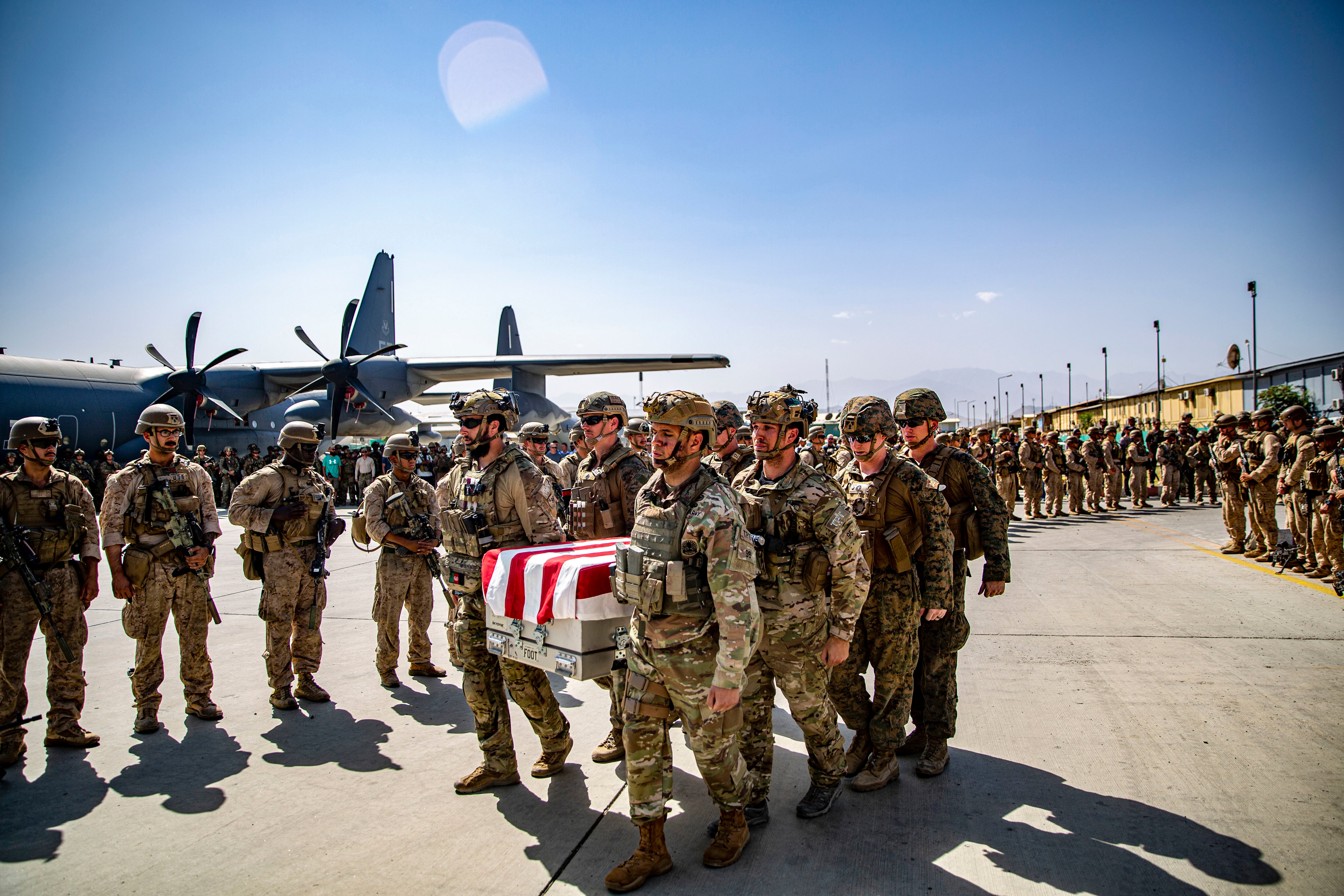
Owen: We became an immediate response force. The tempo has stayed the same, or grown, since we returned in October.
They’re deploying from home station here. It’s more difficult because you’re starting over every time you go somewhere, versus being established in CENTCOM. We don’t know where we’re going or for how long.
We’ve put three of 14 Compass Calls in the Boneyard, and we’re making it work with fewer planes. We have a “get it done” attitude. We’re not a big program. It’s on us to keep things moving in the right direction.
Drolshagen: The prospect of having everybody at home was weird. We only have so many shops, we only have so many flight commander positions. Where do we put all these people? I think that’s part of the transition to the EC-37B (Compass Call).
I really love C-130s. I’m not sure what the future holds for me, but I hope that it has more turboprops in it.
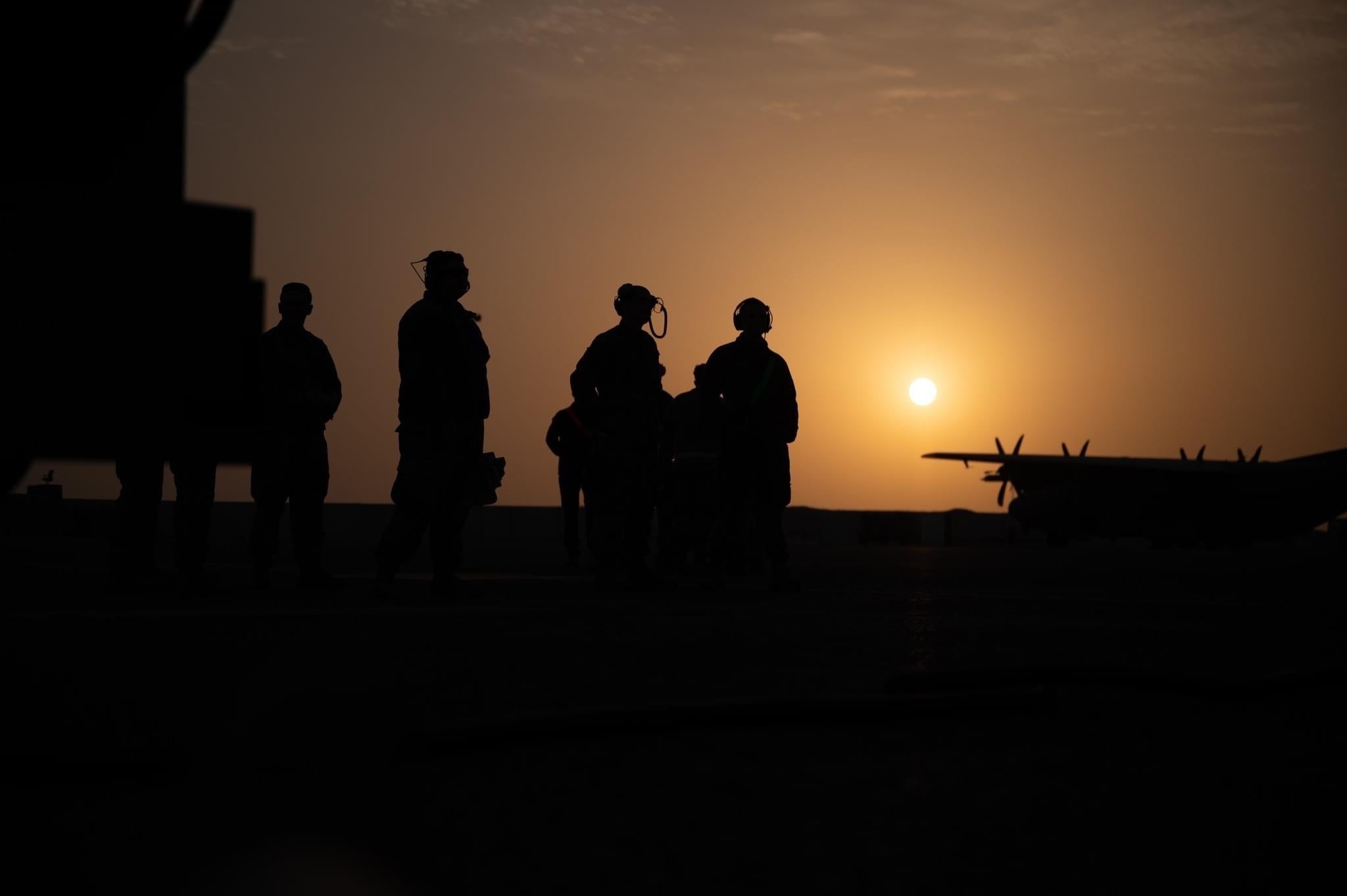
Rachel Cohen is the editor of Air Force Times. She joined the publication as its senior reporter in March 2021. Her work has appeared in the Washington Post, the Frederick News-Post (Md.), Air and Space Forces Magazine, Inside Defense, Inside Health Policy and elsewhere.
